At the intersection of fresh summer tomato flavour and caramelized tomato richness, easy to make tomato powder is an invitation to use up delicious, if less than perfect, end of season tomatoes and transform them into a useful pantry item for your culinary adventures.

As someone who maintains a thriving backyard garden of edible plants, I am always on the lookout for ways to preserve my harvests in all their glory, from the primary harvest itself, to surplus and less than prime crops as well. This outlook extends to produce that I don't grow myself, and as time goes on, I enjoy finding more and more ways to preserve seasonal bounty. While of course there is traditional canning, I am interested in processes that might be considered easy or easier, ways of preserving that don't require a ton of experience or special equipment. I especially love preserving methods that seem interesting and useful, and that would be the case with surprisingly delicious tomato powder.
Jump to:
What is tomato powder?
Dried vegetable and fruit powders, usually one type of vegetable or fruit that has been completely dehydrated and ground into a powder, have become increasingly popular for culinary use. These botanical powders, which can be used in everything from smoothies to cooked dishes, are an extension of long standing food dehydration techniques that are as old as human culture itself. While a whole dehydrated vegetable might be useful for certain dishes, a powder lends itself to a multitude of uses.

Why make tomato powder?
One summer, at my local farmers market, I noticed that end of summer tomatoes were plentiful and cheap, perfectly delicious and suitable for eating or cooking, but certainly nothing to look at; the ideal candidate to make a dehydrated powder with.
As a huge fan of in-season tomatoes, the idea of preserving the intoxicating seasonal flavour and aroma of ripe tomatoes, for use when we descend into the doldrums of winter tomato blahness, took hold in my imagination.
Once the powder was completed, I realized why so many people are interested in vegetable and fruit powders. Vegetable powders are relatively easy to make, can be made with home grown or store bought produce, can help reduce food waste and preserve a harvest, and as importantly, provide enlivening and enticing flavours for cooking.
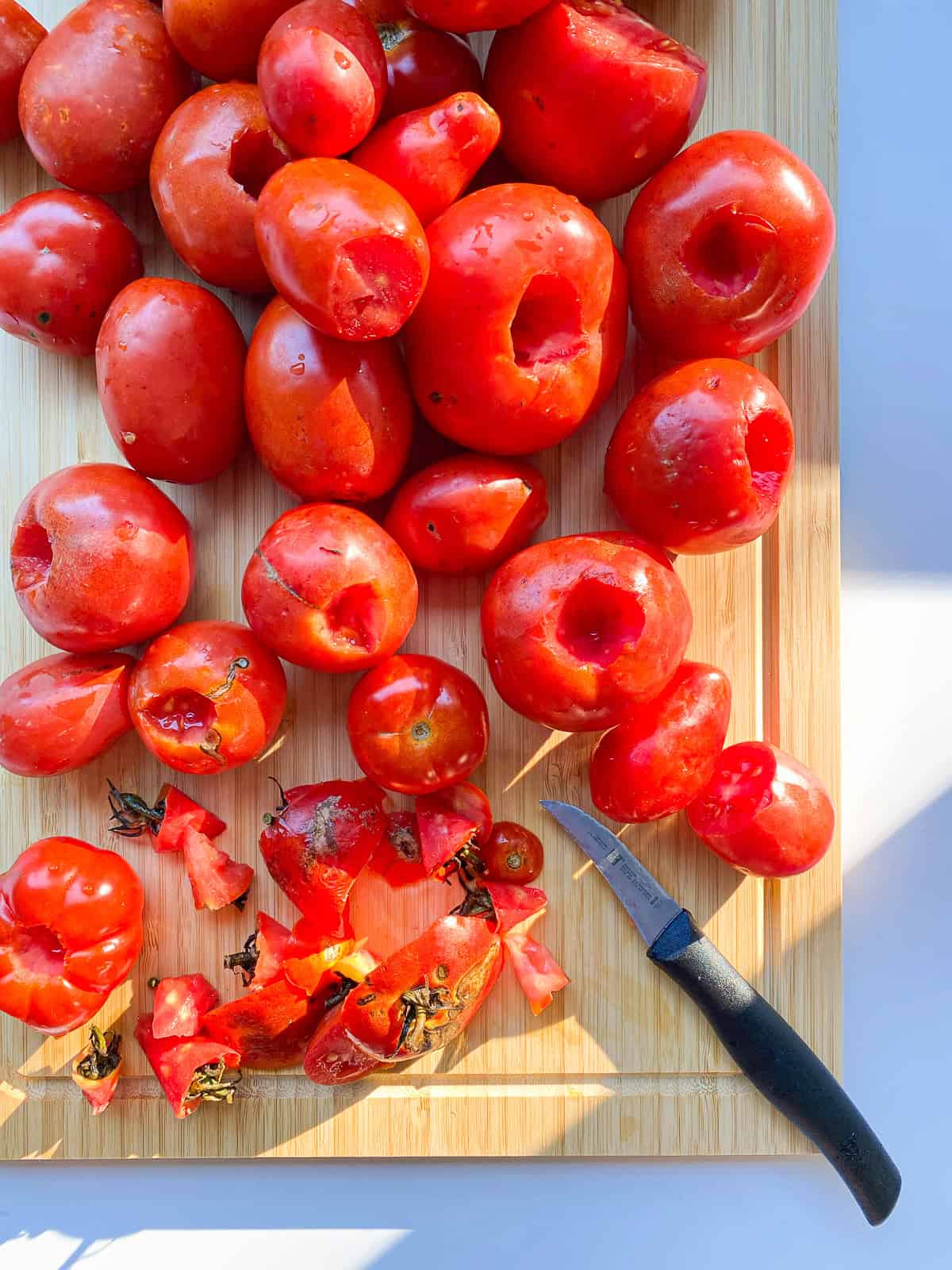
Ingredients
There are no set amounts for making tomato powder. As the only ingredient is tomatoes, make as much as you want at any given time, taking into account that the resulting powder will be many times smaller in volume than what you start with. I would say that it is worth searching for and using organic tomatoes if possible, and in any case, make sure the tomatoes you are using are tasty and ripe, but not overly soft.
How to make Tomato Powder
After washing and drying the tomatoes, remove larger stems or blemishes with a small paring knife. When slicing the trimmed tomatoes, aim to slice them as evenly and thinly as possible while still keeping the slices intact for easier handling.
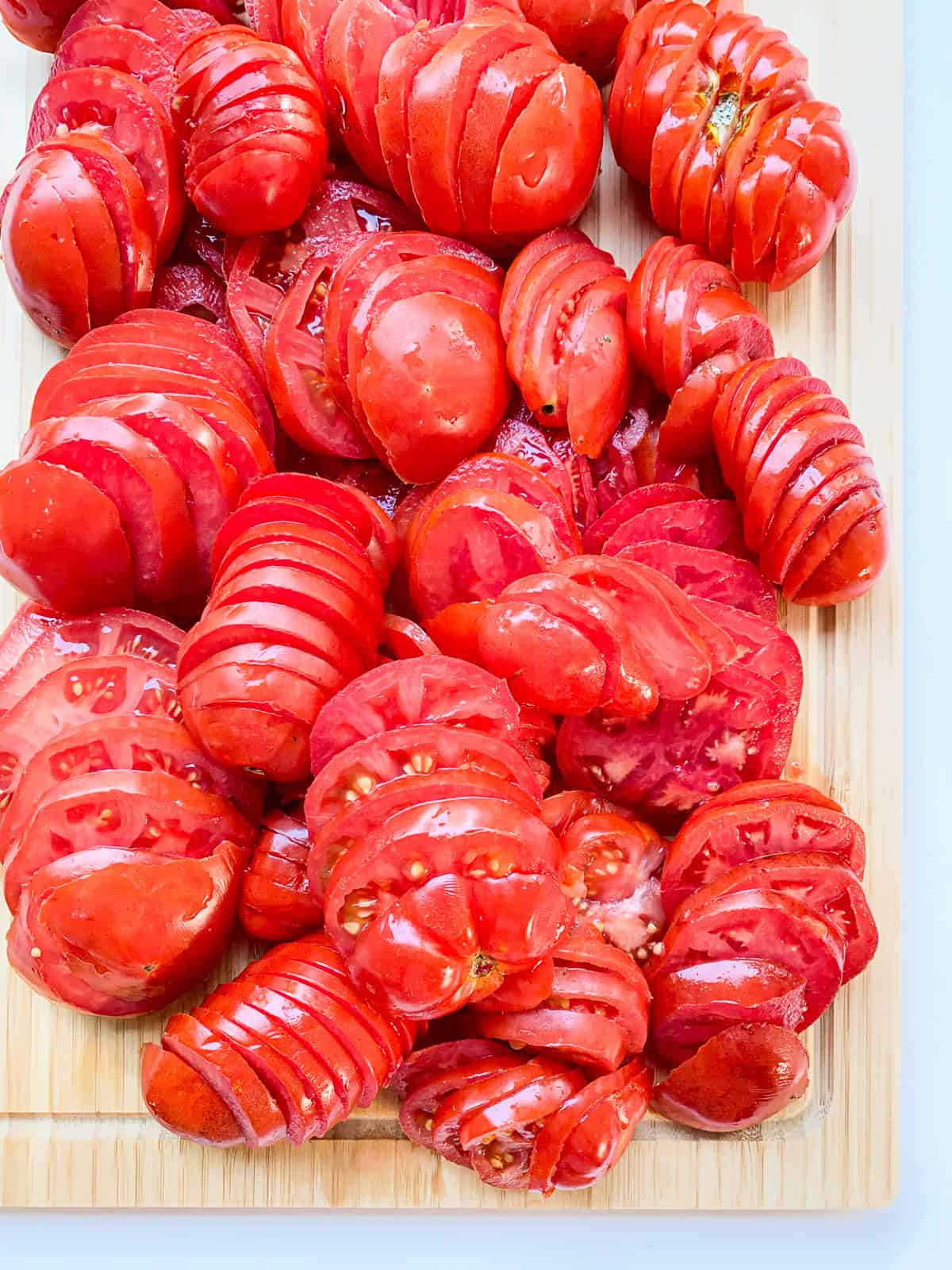
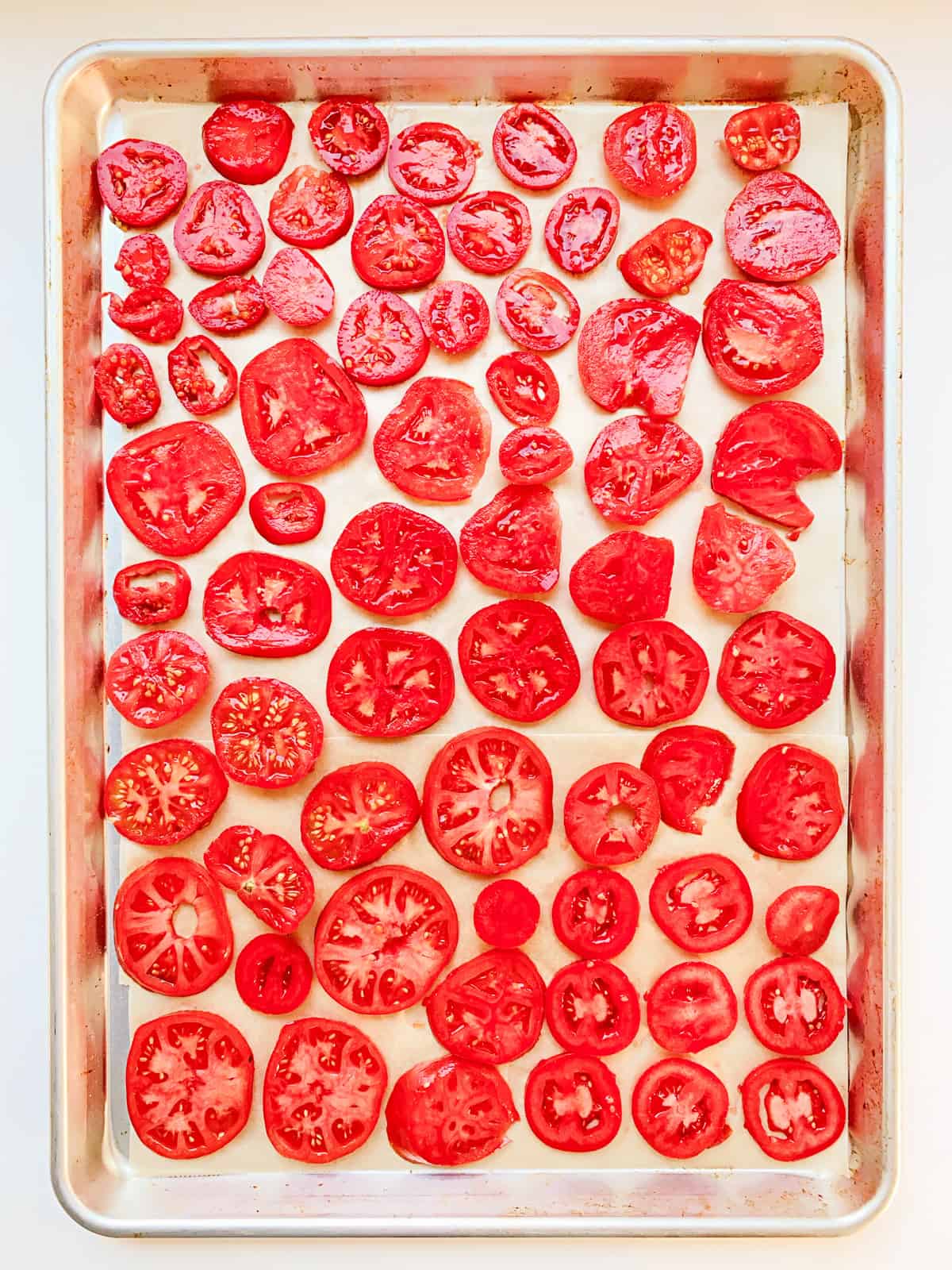
Set your oven to its lowest or specific dehydration setting; usually this is between 110°F and 170°F (it's 170°F on my oven). Use a convection setting if you have it to speed up the drying process. Line as many baking trays as will fit on your oven racks with parchment paper or silicone mats. Make a tomato jigsaw on each tray by spreading out the tomato slices, making sure to leave space between slices to allow for air circulation.
Put trays into oven and check every few hours, allowing humid air to escape and checking for doneness, checking more frequently close to the end of the drying time as the tomatoes become visible dessicated. The amount of time needed to fully dehydrate the tomatoes is highly variable, and will depend on multiple factors such as how juicy your tomatoes are, how efficient your oven is, what kind of trays you are using, if you have convection settings or not, etc. If using a dehydrator instead, follow the instructions included with your particular unit for drying damp vegetables or fruits.
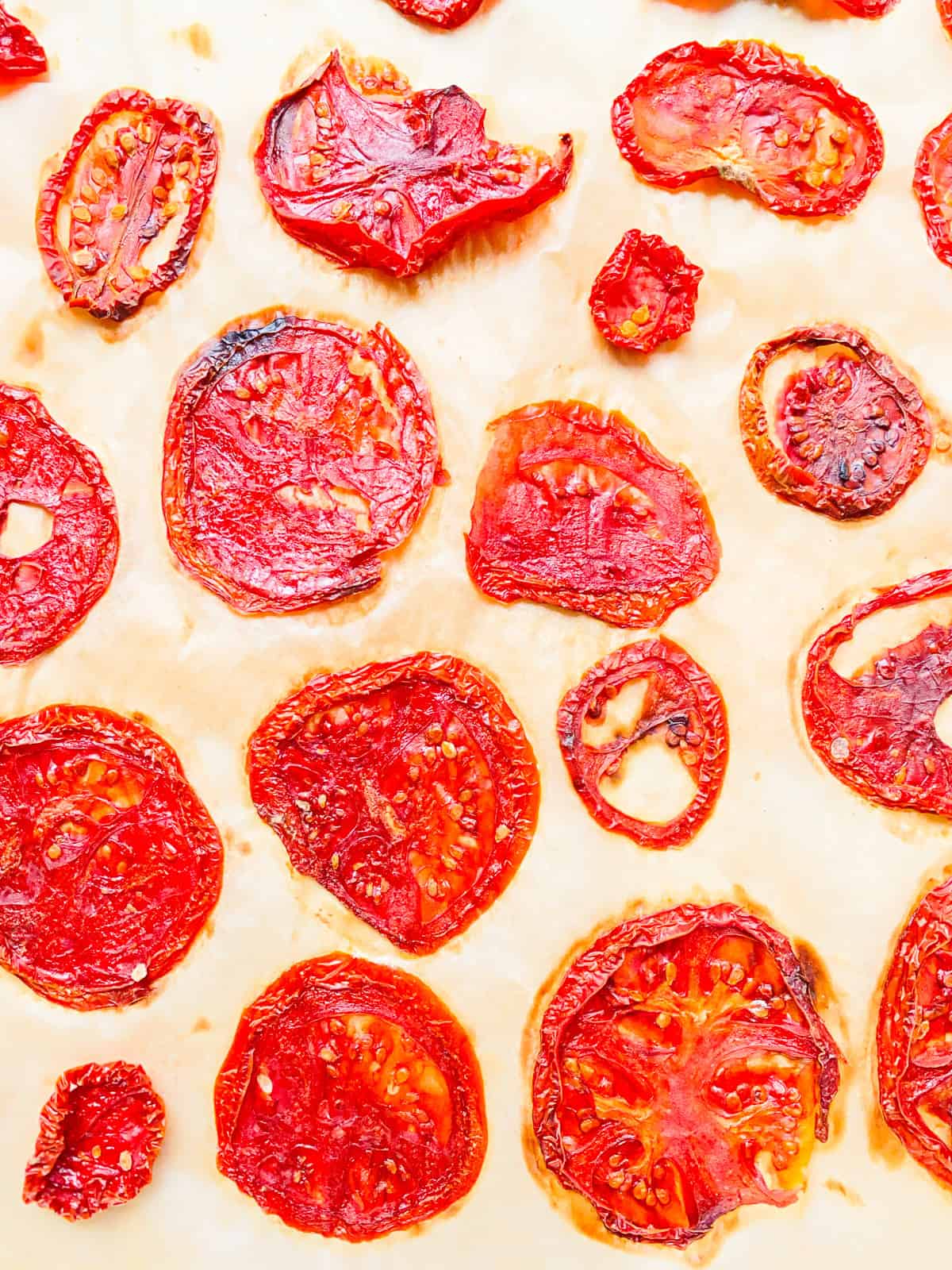
After their mostly unattended spell in the oven or dehydrator, the tomato slices should be dried to a literal crisp, and should feel crispy and brittle, not chewy or flexible, and should crumble easily when crushed. Once ready, the trays of dehydrated tomato slices should be left to come to room temperature, and then processed into powder once cooled.
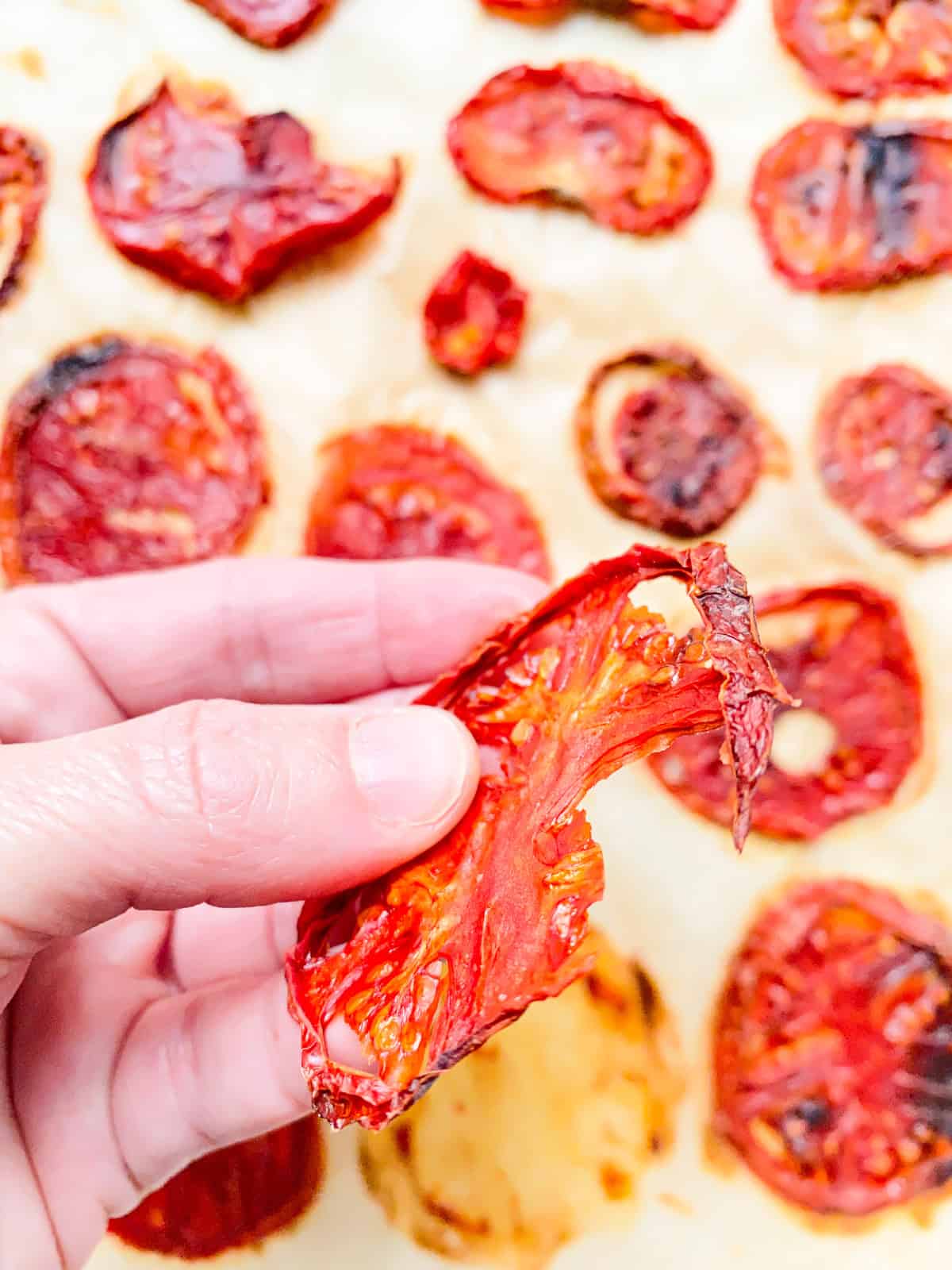
Incidentally, the dried tomato slices, or tomato crisps as I like to call them, are incredibly tasty, with a deep, rich umami flavour similar to caramelized tomato paste. In future batches, I will try to remember keep some of the dried slices intact, to include in anything from salads to sandwiches.
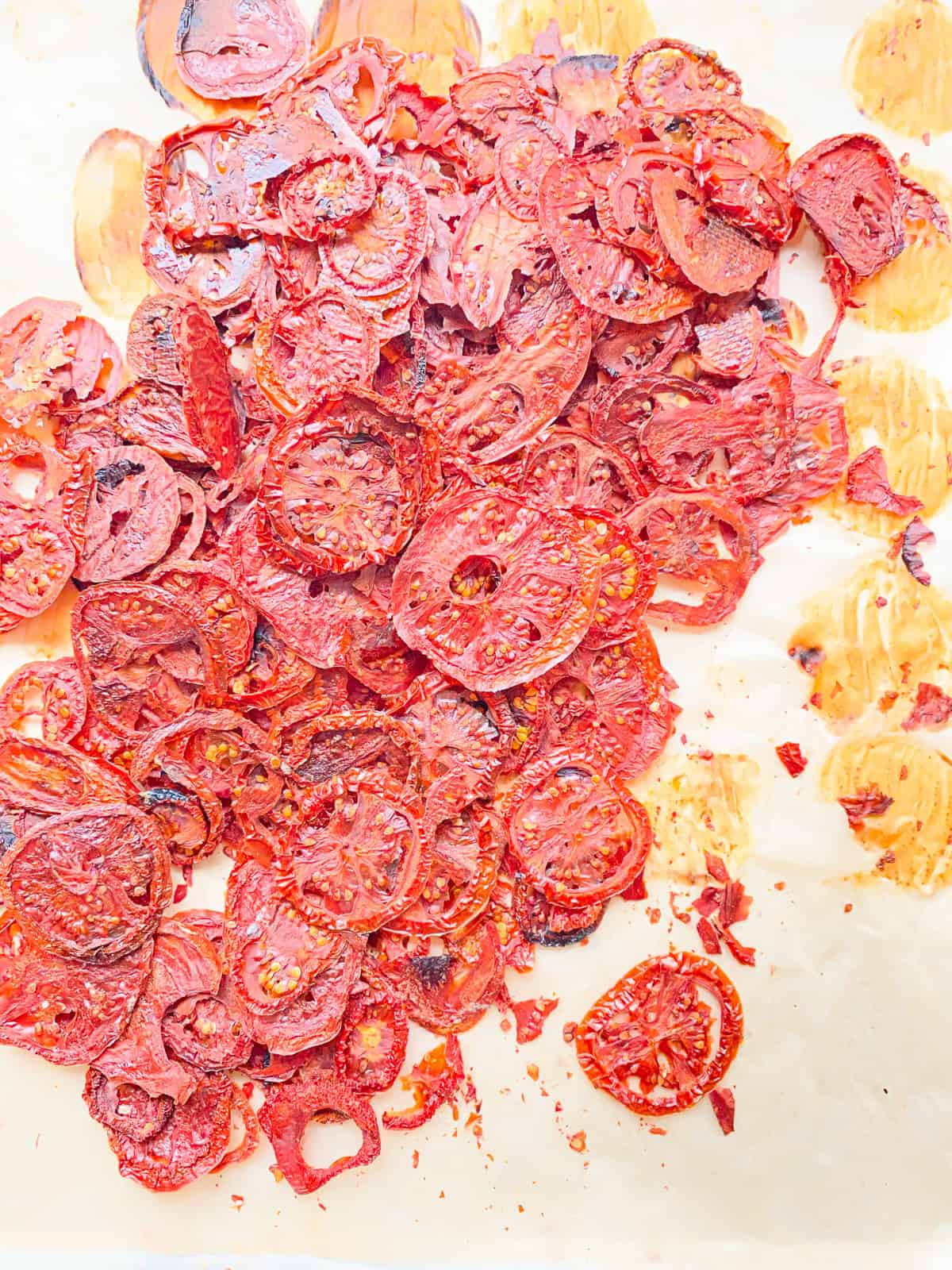
To turn the tomato crisps into tomato powder, use a high speed blender, if you have one, to pulverize the dehydrated tomatoes into a fine powder. A milling canister, if that is on hand, will make the finest powder possible, and using a tamper, if your blender comes with one, is helpful to push the slices down into the blade.
If you don’t happen to have a similar appliance or canister, consider making smaller batches of powder using a spice grinder or bullet style blender for the finest powder (crumbling the slices first into small pieces to fit inside). Use a food processor for larger batches, which I think would result in a less fine but still acceptable result.
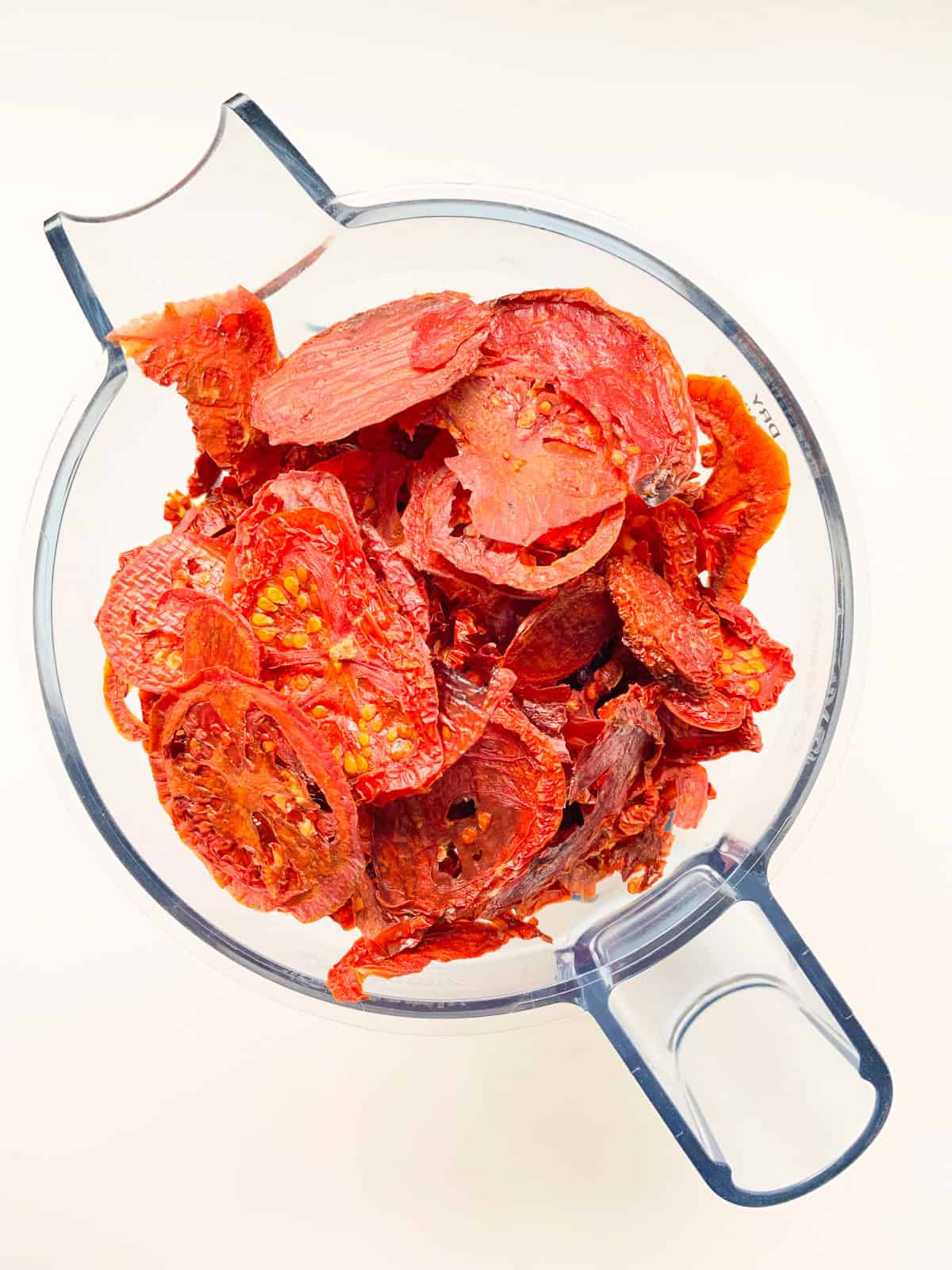
What does Tomato Powder taste like?
Tomato Powder has the most gorgeous russet hue, with a complex and savoury aroma, vegetal and redolent of tomatoes, with a taste that is far deeper, richer and more interesting than expected, at the intersection of fresh summer tomato flavour and caramelized tomato richness. Taking in the aroma of just the tomato powder itself produced a sense memory of inhaling the steamy fragrance from a bowl of rich, utterly savoury vegetable broth; complex and appetite stimulating, and far more than I first expected from a one ingredient concoction.

Storage
Store prepared Tomato Powder in a small glass jar, away from sunlight. To keep Tomato Powder extra dry and free from too much clumping, I keep and reuse small food safe packets of desiccant rescued from packaged goods such as sushi nori and the like, popping the tiny packet into the top of the jar; a nice finishing touch to the whole process but definitely optional.
How to Use Tomato Powder
Tomato powder, somewhat of a condiment, ingredient and spice hybrid, gifts the user with a depth of flavour that can enhance a variety of dishes. From bolstering less than stellar out of season tomato flavour in vinaigrettes, soups, vegetarian chilies, and stews, to enriching sauces, gravies or raitas, compounded with butter, mayonnaise, goat cheese, or spreadable vegan cheese, or sprinkled onto salads, grain salads, avocado, and savoury crostini, tomato powder has a multitude of potential uses.
Tomato powder can also be used to make tomato paste! Simply use an equal amount of tomato powder and hot water, mixed together, to create a paste. Use where you would standard tomato paste.

Looking for more tomato recipes?
- Radish Leaf, Tomato, Mint, and Lime Salsa
- Roasted Tomato and Garlic Soup with Pan-Crisped Croutons
- Oven Roasted Tomatoes
- Tangy White Beans with Garlic, Tomato and Lime
- Easy Garlic Tomatoes
- Quinoa "Tabbouleh" with Preserved Lemon and Green Herbs
- Sheet Pan Spiced Roasted Vegetables with Spinach and Basil
- Pan con Tomate
Tomato Powder
Equipment
- Baking trays
- Silicone baking sheets or parchment paper
- High speed blender with milling canister, spice grinder, or food processor
- Oven, with the ability to set as low as 170℃ or lower, convection optional
- or Dehydrator, optional
Ingredients
- fresh organic tomatoes amount variable, washed and dried, stems and blemishes removed
Instructions
- Prepare your baking trays by lining them with parchment paper or silicone baking sheets.
- If using your oven, set to 170°F (convection optional) or as low as 110°F.
- Wash and dry your tomatoes, cutting out any blemishes or especially woody stems.
- Slice tomatoes as thinly and evenly as possible while keeping slices intact.
- Spread your slices out individually on your prepared baking trays, making sure slices do not touch to allow for better airflow.
- Put trays into oven and check every few hours, allowing humid air to escape and checking for doneness. The amount of time needed to fully dehydrate the tomatoes is highly variable, and will depend on various factors such as how juicy your tomatoes are, how efficient your oven is, and if you have convection settings or not, etc.
- Tomato slices are done when fully dehydrated - they should feel crispy and brittle, not chewy or flexible, and should crumble easily when crushed.
- Put all tomato slices into a high speed blender milling canister, mill on high speed until as finely ground as possible - using the tamper to help the powder blend thoroughly if needed.
- If using a spice grinder, crumbled the slices up first to better fit into the grinder, and blend into a fine powder in batches.
- If using a food processor, blend until as fine as possible.
- If using a dehydrator, follow the instructions included with your particular unit for drying damp vegetables or fruits.
- Once ground, store your powder in an airtight glass container; you can add a food safe desiccant packet to help keep your powder dry and less clumpy (optional).

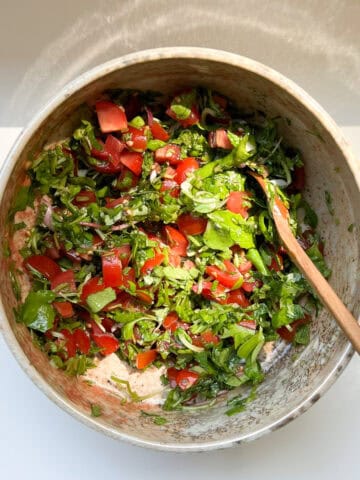

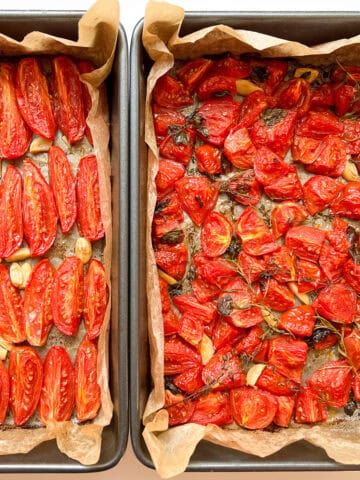





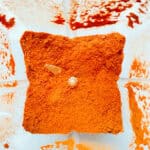
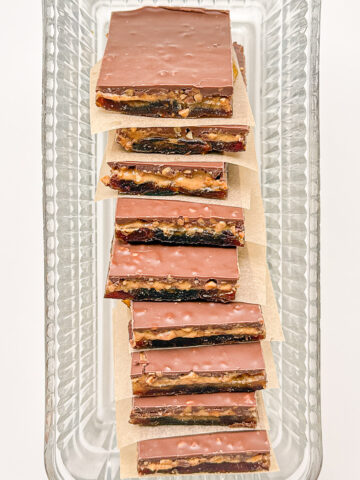



Leave a Reply